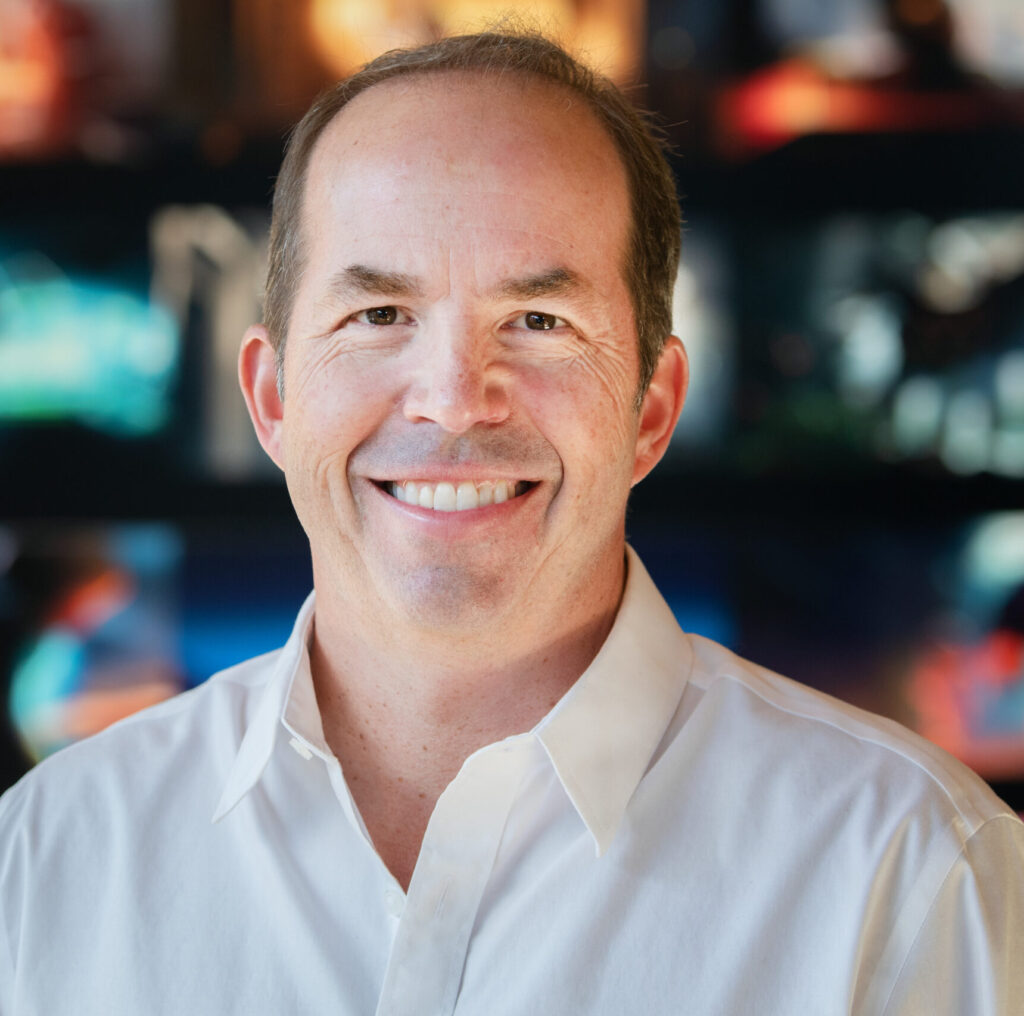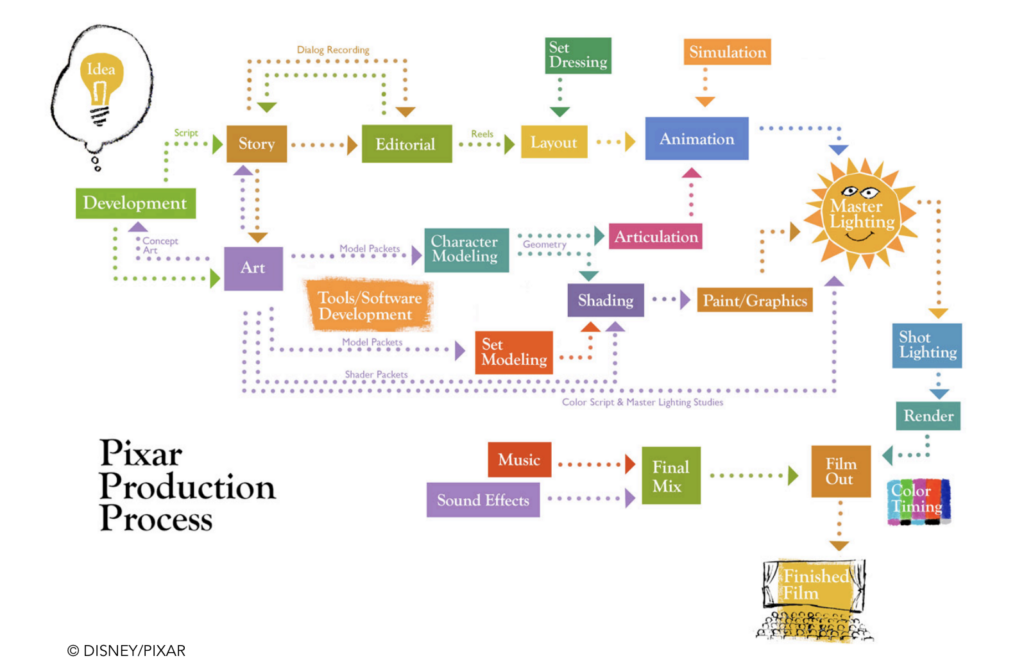
Welcome to the first edition of the “Meet the Visionary” editorial series, where we’ll spotlight key luminaries in the Universal Scene Description (OpenUSD) ecosystem.
 In our inaugural piece, we’re delving into the world of 3D animation and digital technology through the eyes of a leader in technology and storytelling: Steve May, CTO of Pixar Animation Studios and chairperson of the Alliance for OpenUSD (AOUSD). May’s vision for OpenUSD as an industry standard is not just transforming the animation industry; it’s setting a new benchmark for digital creation across various sectors.
In our inaugural piece, we’re delving into the world of 3D animation and digital technology through the eyes of a leader in technology and storytelling: Steve May, CTO of Pixar Animation Studios and chairperson of the Alliance for OpenUSD (AOUSD). May’s vision for OpenUSD as an industry standard is not just transforming the animation industry; it’s setting a new benchmark for digital creation across various sectors.
To hear more about what May thinks of the future of OpenUSD, watch the video interview:
Steve May’s Formative Years at Pixar
The development of Universal Scene Description did not happen overnight. “USD is actually the evolution of technology that Pixar has been developing for decades,” May says.
May’s career at Pixar Animation Studios spans over two decades. His tenure at Pixar began in 1998, when he served as the simulation and effects sequence supervisor on “Monsters, Inc.” In this role, he played a crucial part in developing the fur technology and overall look for the character Sullivan, a pioneering effort in the field of animation at the time.
 His work in “Finding Nemo” as the CG supervisor for ocean-set scenes involving the shark characters — Bruce, Anchor, and Chum — and the Sydney Harbor environment, helped bring realistic computer-generated water elements to the screen, an incredibly difficult challenge at the time.
His work in “Finding Nemo” as the CG supervisor for ocean-set scenes involving the shark characters — Bruce, Anchor, and Chum — and the Sydney Harbor environment, helped bring realistic computer-generated water elements to the screen, an incredibly difficult challenge at the time.
 May’s career path reflects a blend of technical prowess and creative vision, making him a natural leader for Pixar’s technological advancements, including the development and implementation of Universal Scene Description. “We needed a really powerful technology to describe all of that complexity, all of that geometry, all the materials, all the lights. That’s why we created USD,” May reflects.
May’s career path reflects a blend of technical prowess and creative vision, making him a natural leader for Pixar’s technological advancements, including the development and implementation of Universal Scene Description. “We needed a really powerful technology to describe all of that complexity, all of that geometry, all the materials, all the lights. That’s why we created USD,” May reflects.
These formative projects in May’s career were instrumental in shaping his understanding of the animation industry’s needs and challenges, eventually leading to his pivotal role in the development and advocacy of USD as an industry standard.
The Genesis of Universal Scene Description at Pixar
It was back in 2013 when USD first emerged within the walls of Pixar. “We wanted to share it with everyone; we also wanted our artists to have the best tools available,” May said. Under his guidance, Pixar developed USD to address the complexities of creating lifelike, detailed animated worlds. USD stands out as a universal language for all elements in a digital scene — characters, environments, lighting, and camera movements.
Impact Beyond Animation
The influence of USD extends beyond Pixar’s walls. USD became a catalyst for change in various industries, from gaming to virtual reality, and even in sectors like manufacturing and architectural design. USD’s versatility in handling complex scenes and facilitating collaboration among large teams has universal appeal. This widespread impact was a driving factor in the formation of the AOUSD.
AOUSD: A Leap Toward Universal Standards
The foresight of May and those at Pixar helped lead to the transformation of USD from a proprietary to an open-source framework, known as OpenUSD. “We open-sourced it because we wanted it to become a standard,” said May. “We also knew that we had a good answer to this problem, and we knew that other people were trying to solve it, too.” This strategic move aimed to establish USD as a standard not just within Pixar but across the entire animation and visual effects industry. By open-sourcing USD, May envisioned a collaborative ecosystem where innovation and creativity are not confined to a single studio but are a collective pursuit.
 Recognizing the need for wider industry adoption and standardization of OpenUSD, the Alliance for OpenUSD was established and founded by Pixar, Adobe, Apple, Autodesk, and NVIDIA. As the chairperson of AOUSD, May plays a pivotal role in this alliance, helping drive the mission of standardizing and developing formal OpenUSD specifications.
Recognizing the need for wider industry adoption and standardization of OpenUSD, the Alliance for OpenUSD was established and founded by Pixar, Adobe, Apple, Autodesk, and NVIDIA. As the chairperson of AOUSD, May plays a pivotal role in this alliance, helping drive the mission of standardizing and developing formal OpenUSD specifications.
Unexplored Potential of OpenUSD
May’s vision is firmly rooted in the future, focused on pushing the boundaries of what OpenUSD can achieve. “We’ve really only just scratched the surface with OpenUSD,” he notes, pointing toward the untapped potential of this technology.
From introducing animation curves to exploring procedural execution for dynamic character rigs, the possibilities are endless. The most exciting aspect, as May suggests, is the unforeseen applications of OpenUSD — those innovative uses that haven’t even been imagined yet.
A Visionary’s Legacy in 3D Graphics
Steve May’s story is a testament to visionary leadership and collaborative spirit in the rapidly evolving world of 3D graphics. By championing the development of OpenUSD, May is not just enhancing Pixar’s storytelling capabilities; his commitment to fostering innovation and collaboration through the framework has established it as a foundational element in the 3D technology landscape, paving the way for new possibilities in computer graphics and beyond.
“What’s exciting is we’re already starting to see the evolution of OpenUSD, both in terms of industrial applications and spatial computing. Those are not things we had in mind when we were creating USD to make our animated movies,” says May.
If your company is interested in joining the Alliance for OpenUSD, sign up to become a member. Check out the AOUSD website to learn more about the organization and what membership entails.
Follow AOUSD on Facebook, Instagram, LinkedIn, X, and YouTube, and get support from our community of artists, designers, and developers in our forum.

